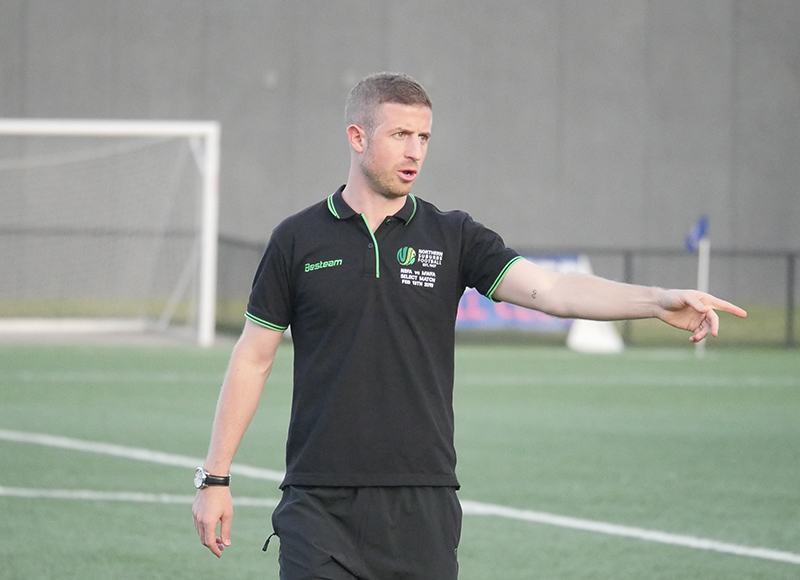I write this piece with the proverbial saying “there’s 1000 ways to skin a cat” in mind. Hopefully, you will enjoy reading my approach to coaching, largely in reference to the Game Training or Performance Phase. It is not the only way – but it’s my way.
In all successful teams across any sport you will find common reasons for their achievements. However, one facet reigns above all else and that is culture – a word commonly thrown around these days but one which is difficult to quantify and measure. What can be determined is who generates that magic word (or dust) – the figurehead, role model, taxi driver and sometimes kit washer. Who knew a coach wore so many hats? Culture is developed over time but introducing it from day one is essential. Take some time to think about what culture means to you and invest in it. Tip – very quickly establish which players have charisma, the respect of their fellow players and good communication – they are the main ingredient. Get them involved in creating ‘vibes’ and let them do what they do best. Player-led activities generate deeper meaning and lasting connections. Lastly, allow yourself to drop the whiteboard and whistle sometimes. Be open to sharing the lighter moments with your team. Let them see your personality and most importantly, be ready to get in the trenches with them. Actions speak louder than words.
Long before a ball is kicked or a cone placed, you must understand what your principles are and how you will apply them. Try writing the word ‘principles’ in the centre of a page, circle it, then put words or phrases around it which you think best correlate to your principles i.e. a mind map – fun, engaging, challenging, professional, player improvement, teacher etc. Now you have a framework on the environment you wish to create. Don’t forget to continuously evolve the chart and refer to it religiously. Your principles are your heartbeat.
The same exercise can be undertaken surrounding key terminology. What ‘language’ do I think is important? How am I going to communicate with my players and what are my key messages, or non-negotiables as a coach? If you want a set of individuals to play as a team they need to be in harmony, in sync and in tune with each other. Getting your players to ‘speak the same language’ is key and it is often your 12th player without you realising. Communication should be valued and make no mistake, it is a two-way street. Think back to any coach or mentor you have had in the past and what made them important to you? Why did they have a positive influence on you? What was the core behaviour they displayed? I bet it is something along the lines of ‘how they cared about you’. Was I right? Whether it is in person, by email, via an app or direct to your phone, your players must be comfortable and encouraged to approach you as needed. Your goal is to make players feel valued and connected. Be open, honest and communicate, communicate, communicate.
Once you’ve considered some of your off-field foundations it’s time to get your on-field basics in order. What style do you want to play (possession-based, counter-attacking)? How do you want to set up your team (formation)? What attitude or personality do you want your players to have when they take the field (hard working, creative, fearless)? What building blocks are you going to introduce to your players first (attacking, defending principles)? My approach has always been to start with the defensive end of the field, or interestingly what Melbourne City FC call – Attacking Zone 1. More on that in a second. As the saying goes, goals win games, but defence wins you titles.
To be successful you must get your structure right. Where you want your players to be, how you want them to get there and why. What works best with one group may not work best with the next. Use what you have to get the best out of people. Back to Melbourne City’s choice of language. Such a simple yet effective shift in terminology that instantly sends the right message. For your defenders & goalkeeper, their mindset now becomes “we are the first members responsible for the teams attacking structure – our attack starts with our defence”. The same applies to the attackers, where the front third is labelled – Defending Zone 1. Again, encouraging and almost dictating the team to believe in a mentality of “we defend from the front”. All 11 players operating with the same mindset. After all, the higher up the field you gain possession, the closer you are to the opposition goal. When times are tough, a collective understanding and reliance on your structure is pivotal.

We now venture into the meaning and creation of training sessions. This is a broad topic that cannot be summarised in one article let alone paragraph, however, I believe in the notion that training is ‘mine’, game day is ‘theirs’ [the players]. What do I mean by that? Training is a unique and special place where I am their teacher, facilitator and shepherd. It is my opportunity to educate, convey messages and instil my principles and foundations to steer the group onto the path I have in mind. Unfortunately, there’s not enough time to explain how I do it. What I will say is that you cannot coach every outcome within a session, a week, a season. Patience is vital. If you’ve ever learnt to drive a manual car, you’ll know what I mean. There’s the clutch, the accelerator, the gear stick, indicators, mirrors, starting, stopping, changing gears – and then there’s steering the car! To translate, if you’re asking players to pass like this, run over here, look over there, execute this move, call out that word, tackle – all within the same moment – they’re going to stall. Try and break things down to a level your players can absorb. Refer back to your terminology or language and keep things concise.
Creating meaningful training sessions which flow requires a high level of planning and organisation. If you’re limited to one or potentially two sessions per week, reduce how much time you spend moving things around between exercises. I achieve this by always carrying a session plan. The session plan includes information which is often forgotten, such as the number of bibs required and how long I want an exercise to last. Where possible, place equipment in proximity to where you anticipate using it. This will help raise the intensity within your session and reduces the opportunity for concentration levels to fall. At all times you should include ‘competition’ and a sense of challenge amongst the players – relay races, trick/skill competitions, crossbar challenge, keeping score in all games, 1 v 1 duels. Settings which encourage friendly competition in preparation for the weekend where the competition isn’t so friendly. Where appropriate, join in. Players love seeing the coach get involved.
On the other hand, game day is reserved for the players. It’s their time, it’s no longer about me. Depending on the age and capabilities of your playing group, try ‘loosen the lead’ when it comes to how much you control things. At the start you might need to set the tone and ensure the players conduct a thorough warm-up etc but over time allow the leaders within your group to take charge where possible. When I see coaches dictating every pass, move and thought for their players I instantly get annoyed. How will players learn and develop if they are constantly being told what to do and are not trusted to make their own decision? Go back to my manual car reference, as the instructor you can’t find the ‘sweet spot’ on the clutch for the driver, yet some coaches want to effectively play the game on behalf of the players. That behaviour immediately tells me the coach hasn’t planned and executed correctly during the week to prepare the players. Remember, that [training] is your time. Use it efficiently. On game day let the players express themselves and play their own game. You’re their bowling lane barriers helping them stay on course but don’t play the game for them. I’ve always viewed successful coaching as seeing a player combine their own natural ability with a slice of my intervention at some stage. That is the holy grail. Rare but oh so satisfying.
I’ll leave you with my final three pieces of advice.
- Every player wants to know their role and responsibility within the team, and it is the coaches job to ensure they do.
- Show your players that you care and value them. I love what Craig Bellamy (Melbourne Storm Coach) once said “if you want your players to care you have to care about them and leading that area has to be me”.
- Be organised, know what your foundations and principles are and be personable and open. You’re in it together.
Written by Paul Orgad.

